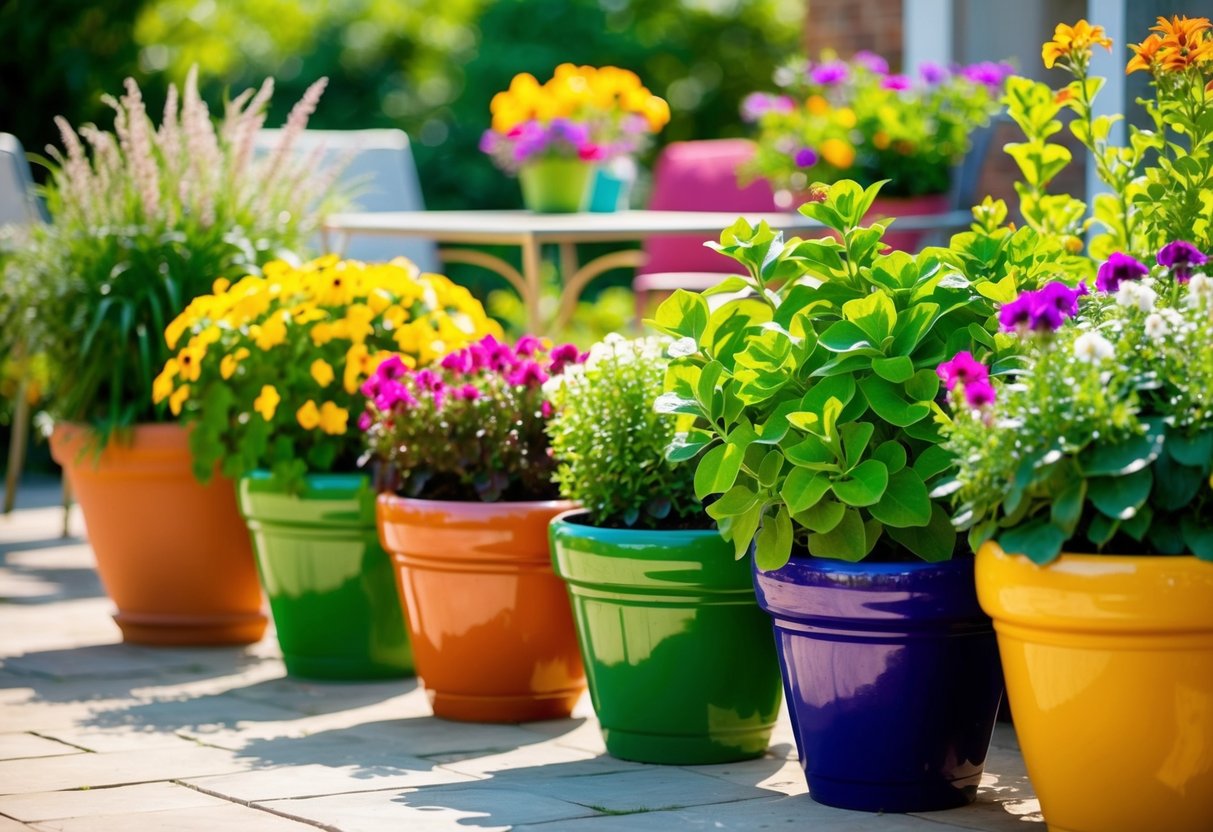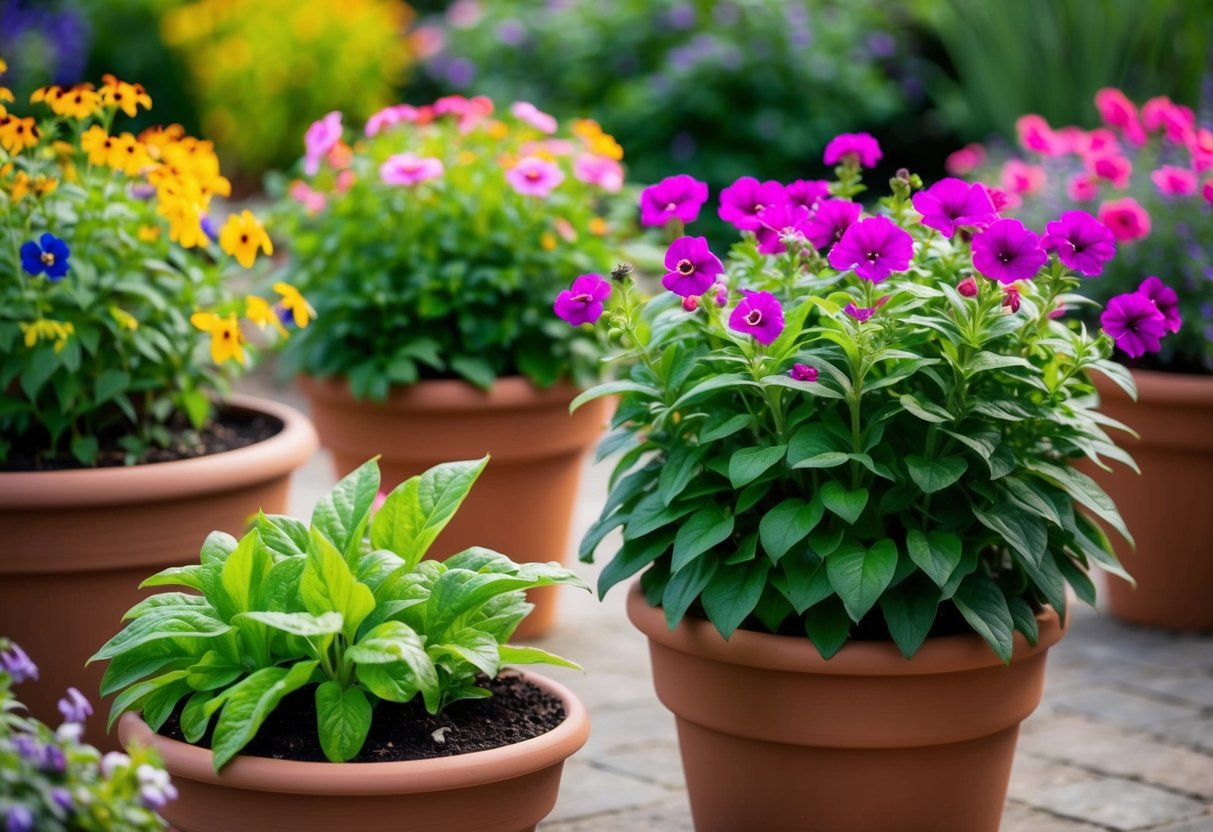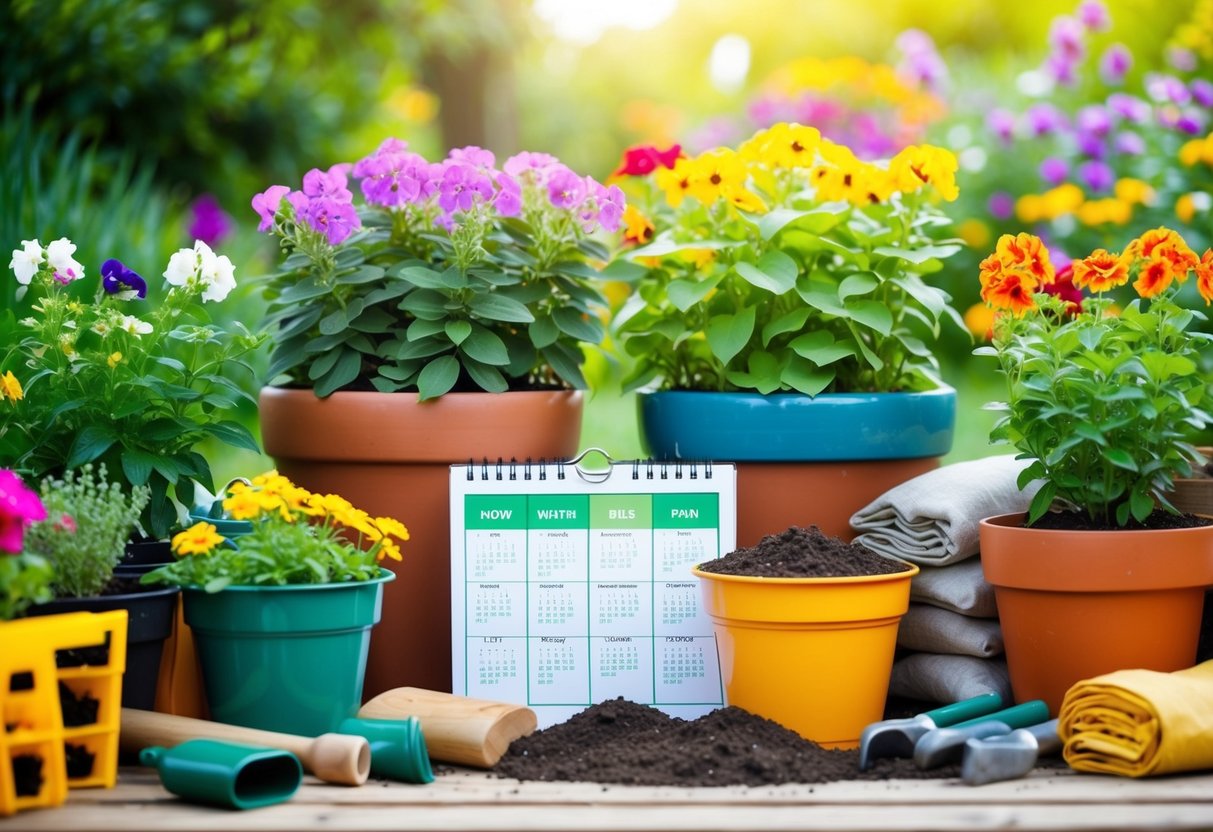Do Bedding Plants Grow Back Every Year in Pots? Unveiling the Seasonal Secrets
When it comes to gardening, you might wonder if your bedding plants will come back every year when planted in pots. This is an important question because it influences how you plan your garden space and maintain your potted plants.
Most bedding plants are annuals, which means they will not grow back every year and typically need to be replanted each season. These plants are often chosen for their vibrant, seasonal blooms that can add a splash of color to your containers.

However, not all hope is lost if you’re looking for plants that return annually. Perennials are a great option if you want something that lasts longer. They come back year after year, making them a smart choice for those who want to avoid yearly replanting. Many perennials, such as Heucheras, can thrive in pots, bringing ongoing beauty to your garden with their varied foliage and color.
If you’re weighing your options, consider both aesthetics and maintenance. While annuals provide a quick burst of color, perennials offer sustainability and long-term enjoyment. Your choice might depend on how much time you’re willing to invest each planting season and the look you want to achieve in your outdoor space.
Understanding Bedding Plants

Bedding plants add vibrant color to your garden, whether they’re annuals or perennials. The choice between these types affects whether the plants return yearly, especially when grown in pots.
Annuals vs Perennials in Pots
Annuals complete their life cycle in one year. In pots, they grow, bloom, and die within the same season. Many gardeners enjoy them for their bold colors and varied choices like marigolds, petunias, and zinnias.
Perennials, like chrysanthemums, return each year, making them ideal for long-term enjoyment. With proper care in pots and consideration of the USDA Hardiness Zone, these plants can thrive for several seasons, bringing reliable beauty to your space.
Selecting the Right Container
Choosing the right container is key for growing healthy bedding plants. Pots should have proper drainage holes to prevent water from collecting. This keeps roots healthy and prevents rot.
The size of the pot matters too. Large containers offer more space for growth, while smaller ones fit well in limited areas like balconies.
Consider the material of the pot. Clay pots allow moisture to evaporate faster, whereas plastic pots retain water. Picking the right material ensures plants receive the proper water level.
Ensuring adequate drainage and selecting the correct pot size and material contribute to the success of your bedding plants, whether they are annuals or perennials.
Key Aspects of Planting and Caring

Creating a thriving garden in pots means focusing on essential elements. Choosing the right soil, watering practices, and ongoing care ensure that your plants flourish in containers.
Soil and Compost Fundamentals
The foundation of any healthy container garden is the soil. Using high-quality compost mixed with garden soil provides your plants with necessary nutrients. Compost retains moisture, which is important for your container plants, as the soil dries out faster in pots.
Drainage is key. Ensure there are holes in the bottom of your pots so water can escape, preventing root rot. You can also add a layer of gravel to improve drainage.
Aim to fill your containers with a blend of materials like peat, perlite, and vermiculite. This combination helps in a loose soil structure that allows roots to grow freely and access nutrients effectively.
Watering and Maintenance Tips
Gardeners know that consistent watering is crucial. Unlike garden beds, pots can dry out quickly, especially during warm weather.
Check your pots daily and water them when the top inch of soil feels dry. Use a watering can to soak the soil thoroughly and let excess water drain out.
Consider using self-watering containers if you often forget to water or live in a hot climate. These containers manage moisture levels without constant attention.
Besides watering, check plants regularly for pests and remove any dead leaves or flowers to keep them healthy. Pruning also promotes fresh growth and maintains an attractive plant appearance.
Design Ideas for Pot Arrangements

When you’re looking to enhance your container garden on the patio or porch, focusing on visual impact and the clever use of foliage plants can transform your space. Explore how flowering perennials and colorful foliage plants can elevate your pot arrangements.
Creating Visual Impact with Flowering Perennials
Flowering perennials are perfect for adding bursts of color and charm to your container garden. Consider using plants like daylilies and lavender, which deliver vibrant blooms and come back yearly. These plants create a lively atmosphere on your patio.
Arrange your pots with varying heights to bring depth and interest. For a stunning combination, mix taller plants such as coneflowers with shorter ones like coreopsis. This mix creates a layered effect that draws the eye.
Add plants that bloom in different seasons to ensure continuous color. For example, pairing spring-blooming tulips with summer-loving echinacea keeps your pots bright throughout the growing season.
Foliage Plants for Texture and Color
Foliage plants play a key role in creating texture and a lush look. Use plants like coleus and hostas for their colorful and varied leaves. They provide a beautiful backdrop for flowering perennials.
For a dramatic effect, try combining plants with contrasting leaf colors. Bold greens, rich purples, and silvery hues can make your arrangements pop with visual interest. A mix of textures, like the broad leaves of elephant ears with the fine leaves of ferns, adds complexity.
Foliage plants don’t just add color but are low-maintenance, making them an excellent choice for busy gardeners. Strategically placing these plants can lead to a container garden that’s both easy to manage and appealing.
Profiles of Popular Bedding Plants

Dive into the world of popular bedding plants and explore how they can add beauty to your garden. You’ll learn about the timeless elegance of peonies and how different varieties of clematis can bring vertical interest to your outdoor space.
Peonies and Their Timeless Appeal
Peonies, known scientifically as Paeonia lactiflora, are a classic choice for gardens. These plants offer stunning blooms that range in color from soft pinks to vibrant reds and whites. The flowers are not only visually appealing but also very fragrant. Peonies perform well in well-drained soil and enjoy plenty of sunlight. Despite their delicate appearance, they’re quite hardy.
One of the main attractions of peonies is their ability to return year after year, providing continuous beauty in your garden. They are best planted in the fall to allow the roots to settle. In addition to their aesthetic appeal, peonies are low-maintenance, making them perfect even for beginners. Just remember, they may take a couple of years to fully establish and produce abundant blooms.
Clematis Varieties for Vertical Accents
Clematis adds height and interest to your garden with its climbing growth habit. Known for their variety, clematis flowers come in many colors, including shades of white, pink, purple, and red. These flowers can grace trellises, walls, and fences, offering a vertical focal point in your garden. They thrive best in a sunny spot with their roots shaded.
These plants are versatile, so you can find clematis varieties that suit different growing conditions. Some popular types include Clematis montana and Clematis armandii. They typically bloom in late spring or early summer, but you can select others that bloom later to extend the flowering season. Clematis needs regular watering but be careful to avoid waterlogging.
Seasonal Tips for Year-Round Blooms

Getting blooms year-round is all about smart plant choices and smooth seasonal transitions. Focus on selections that offer continuous flowering and carefully manage the shift between different weather conditions.
Choosing Plants for Continuous Flowering
Go for sun-loving blooms like daylilies and black-eyed Susans. These bright flowers thrive in sunny spots and bring vibrant color to your garden throughout the year. Some other good choices are perennials like coreopsis and coneflowers. They are reliable and come back every year.
Consider using garden phlox for a splash of summer color and perennial sage for its lovely purple flowers. Variety helps ensure that when one plant’s flowering season ends, another begins. Choosing a mix of plants that come back every year helps maintain constant blooms.
Transitioning Between Seasons
As seasons change, timing is key. Gradually introduce more shade-tolerant plants like hostas and hemerocallis. Hostas can provide lush leaves when blooms fade in cooler months.
Maintain a mix of sun and shade plants to cover varying light conditions.
Daylilies adapt well to different seasons, offering flexibility. You can pair them with salvia or echinacea to fill gaps when blooms are sparse.
Carefully deadhead old flowers to encourage new growth. Prepare for early-flowering plants like Asiatic lilies when winter ends.
Keep tabs on plants that will return each year to keep your display fresh and colorful.







